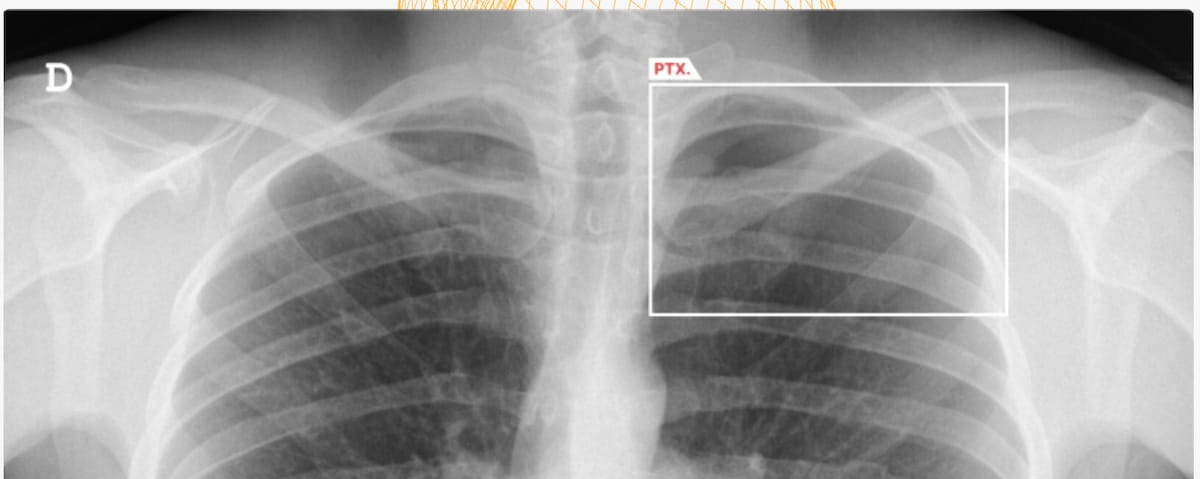FDA Clears AZchest AI Software for New CXR Applications
The AI-powered AZchest CXR software reportedly offers 93.79 percent sensitivity and a 98.57 percent AUC for pneumothorax.
The Food and Drug Administration (FDA) has granted two 510(k) clearances for the artificial intelligence (AI)-enable software AZchest for chest X-rays (CXRs). In addition to lung nodule detection, the AZchest software has been cleared for triage of cases involving pneumothorax or pleural effusion.
Recent research revealed 93.79 percent sensitivity and a 98.57 percent area under the receiver operating characteristic curve (AUC) for detection of pneumothorax with AZchest, according to AZmed, the developer of AZchest. The company also noted that the AI software has a 91.34 percent sensitivity and 98.3 percent AUC for detecting pleural effusion.
Here one can see the use of the AI-powered software AZchest. The software recently garnered FDA 510(k) clearances for triage of pneumothorax and pleural effusion, and lung nodule detection on chest X-ray (CXR). (Image courtesy of AZmed.)

For lung nodule detection, AZmed said AZchest demonstrated 88.47 percent sensitivity and 82.94 percent specificity as a standalone software. In a separate multi-reader, multi-case study, adjunctive use of AZchest increased sensitivity for lung nodules on CXR by 10 percent, according to AZmed.
"We are proud to add two new FDA clearances to our portfolio. Our deep learning algorithms are designed to rapidly and accurately detect abnormalities, thereby ensuring that critical cases are flagged for clinical review promptly," said Julien Vidal, the CEO of AZmed.
Clarius Mobile Health Unveils Anterior Knee Feature for Handheld Ultrasound
April 23rd 2025The T-Mode Anterior Knee feature reportedly offers a combination of automated segmentation and real-time conversion of grayscale ultrasound images into color-coded visuals that bolster understanding for novice ultrasound users.
What is the Best Use of AI in CT Lung Cancer Screening?
April 18th 2025In comparison to radiologist assessment, the use of AI to pre-screen patients with low-dose CT lung cancer screening provided a 12 percent reduction in mean interpretation time with a slight increase in specificity and a slight decrease in the recall rate, according to new research.
Meta-Analysis Shows Merits of AI with CTA Detection of Coronary Artery Stenosis and Calcified Plaque
April 16th 2025Artificial intelligence demonstrated higher AUC, sensitivity, and specificity than radiologists for detecting coronary artery stenosis > 50 percent on computed tomography angiography (CTA), according to a new 17-study meta-analysis.